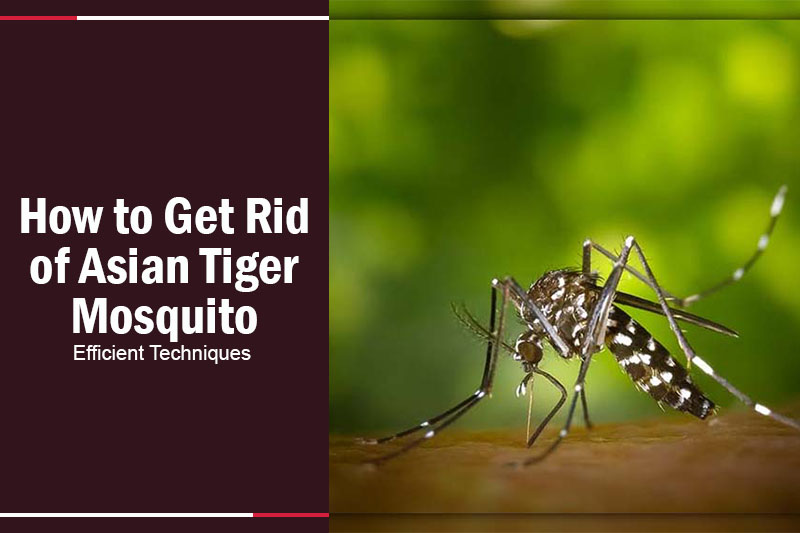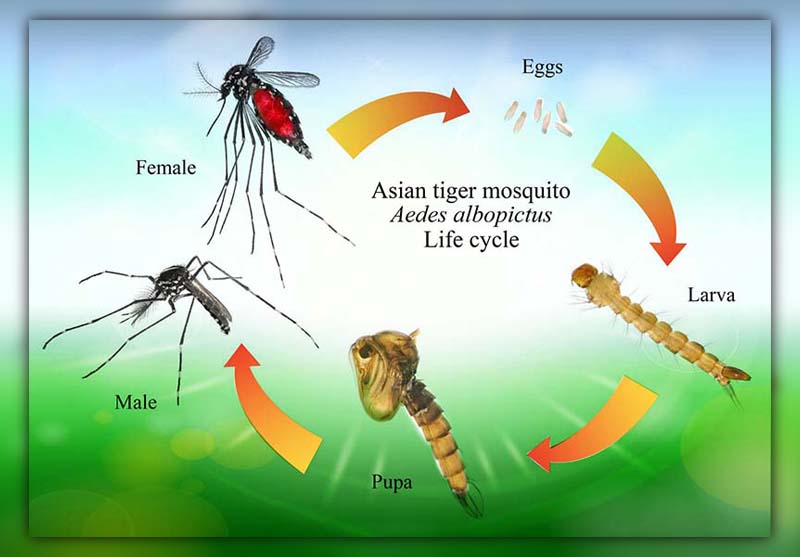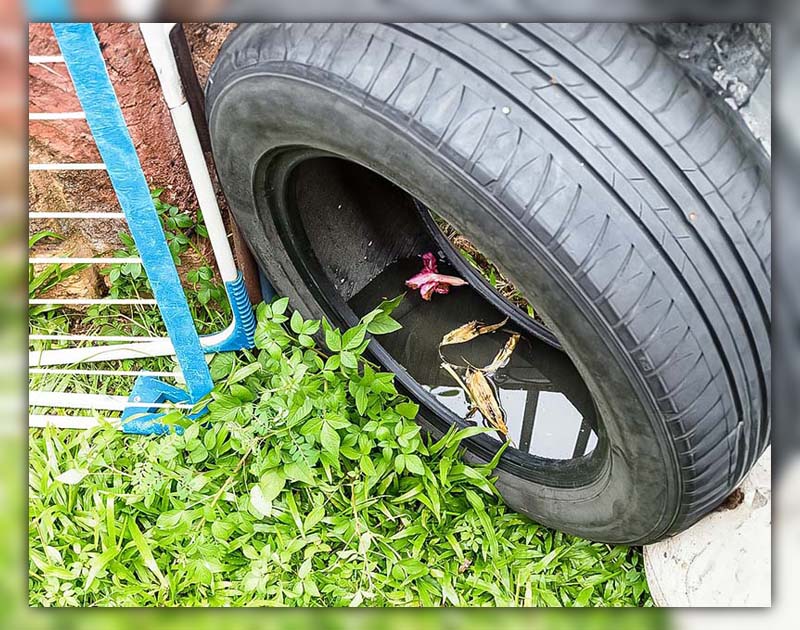Dive into our insightful guide, “How to get rid of Asian tiger mosquito?” and arm yourself with the knowledge to tackle these persistent pests.

1. Can the Asian Tiger Mosquito Kill You?
The Asian tiger mosquito, known for biting during the day, can spread serious illnesses such as Eastern Equine Encephalitis (EEE), Zika, West Nile virus, Chikungunya, and dengue fever.
Even though it can carry these diseases, it’s very unlikely (more than 99.9% chance) that its bite will be deadly for most people.
Read more Can Mosquito bites make you sick? Let’s Discover the Truth!
2. How to get rid of Asian Tiger Mosquito?
To tackle the issue of Asian Tiger Mosquitoes, start by removing any containers that hold water from your yard. This includes old tires, food containers, and buckets.
Prevent these mosquitoes from breeding in bird baths, pet water dishes, and plastic wading pools by emptying and cleaning them at least once a week.
Ensure your roof gutters are free from leaves and debris to avoid water accumulation.
It’s beneficial for neighborhood residents to collaborate in clearing out potential breeding grounds like abandoned cars, old machinery, drums, and other debris in vacant lots.
Read more Can a Mosquito bite through Clothing? Know Your Defense.
3. How to Prevent Asian Tiger Mosquito?
To avoid Asian Tiger Mosquitoes, limit your outdoor activities between dusk and dawn, their most active hours.
Ensure that your doors and windows have screens that are well-fitted and undamaged.
When you’re outside for extended periods, especially during peak mosquito times, wear shoes, socks, long pants, and long-sleeved shirts. Opt for light-colored clothes made of tightly woven fabric to prevent mosquitoes from reaching your skin.
Use mosquito netting for sleeping outdoors or in areas without screens, and to shield infants outdoors.
Apply insect repellent according to its instructions. Products with DEET are effective; usually, 10% to 25% DEET is enough. You can apply it to your clothes and sparingly on exposed skin, if the label allows. Check with a doctor before using repellents on young children.
Be aware that devices like “bug zappers” or sound machines don’t significantly reduce mosquito numbers. Spraying your backyard with insecticide can be temporarily effective, but mosquitoes will return after the spray fades.
While installing bird or bat houses is thought to help control mosquitoes, there’s little scientific proof that these animals greatly reduce mosquito numbers near homes.
Read more Best Essential Oils for Mosquito Repellent: Bite-Free Bliss!
4. Life Cycle and Habits of Asian Tiger Mosquito
Asian Tiger Mosquito larvae, often called “wrigglers,” swim in a squirming motion. About 10 days after hatching, these larvae grow to about 1/4-inch long. They then transform into comma-shaped pupae, known as “tumblers” for their tumbling action in water if disturbed.
The pupa stage is where they develop into adult mosquitoes. In summer, adult mosquitoes emerge from the pupae in water in about 10 to 14 days after eggs hatch.
During winter, Asian tiger mosquitoes remain in the egg stage. They hatch into larvae when their eggs are submerged in water in spring and summer. The larvae feed on tiny debris and bacteria in the water.
Male mosquitoes consume plant juices and do not bite. Female mosquitoes, however, need blood to support their egg development. Unlike many other mosquito species in Illinois, the Asian tiger mosquito is active during the day, not at night.
Approximately four to five days after a blood meal, the female lays her eggs just above the water surface in a rigid container, such as a tree hole, old bucket, or tire. When rainwater covers the eggs, the larvae hatch.

5. When Did The Asian Tiger Mosquito Get to America?
The Asian Tiger Mosquito, also called the forest mosquito, made its first appearance in the United States in the mid-1980s. It is thought to have arrived in America through shipments of used tires from Northern Asia.
Maryland was the location where this mosquito was initially identified. Since then, it has quickly spread across the southern United States and beyond.
Conclusion
In conclusion, the insights shared in our guide on ‘How to get rid of Asian tiger mosquito?’. With the strategies outlined in our blog, you can effectively rid your environment of these persistent pests.
Remember, consistent effort and the right techniques are key. For more insightful tips and guides on managing various pests, don’t forget to explore more blogs from Pestweek.

Calina Mabel has over 15 years of experience in the field of journalism and communications. Currently, Calina Mabel is the Content Writer for categories such as Cockroach, Ants, Bed Bugs, Mosquito, Rodent, Termite, and Flies on Pestweek.com. She aims to build content for these categories with a focus on providing valuable and accessible information to readers, in order to create the world’s largest knowledge community about Pests.
All content written by Calina Mabel has been reviewed by Emily Carter.


